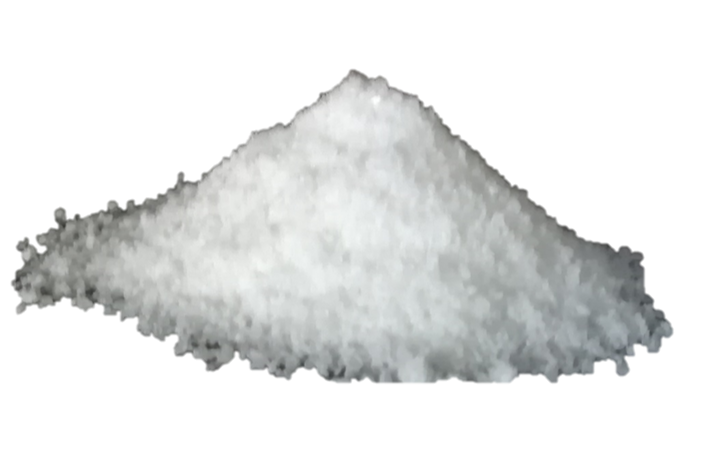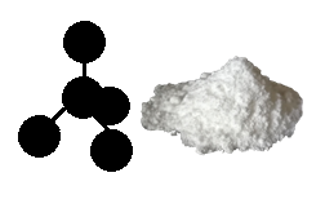CHEMISTRY FORM 2

- 1.1 Structure of the atom
- 1.2 Atomic Number and Mass Number
- 1.3 Isotopes
- 1.4 Energy levels and electron arrangement
- 1.5 Development of the Periodic Table
- 1.6 Relative Atomic Mass and Isotopes
- 1.7 Ion Formation
- 1.8 Chemical Formulae
- 1.9 Chemical Equations

- 2.1 Alkali metals (Group I elements)
- 2.2 Alkali Earth Metals (Group II elements)
- 2.3 Halogens (Group VII elements)
- 2.4 Noble gases (Group VIII elements)
- 2.5 Properties and Trends Across the Periodic Table

- 3.1 Bond
- 3.2 Ionic bond
- 3.3 Giant ionic structure
- 3.4 Covalent bond
- 3.5 Co-ordinate bond
- 3.6 Molecular structures
- 3.7 Giant covalent structures
- 3.8 Metallic Bond
- 3.9 Types of bond across a period
- 3.10 Oxides of elements in Period 3
- 3.11 Chlorides of Period 3 elements

- 4.1 What is a salt?
- 4.2 Types of salt
- 4.3 Solubility of salts in water
- 4.4 Methods of preparing salts
- 4.4.1 Reacting a Metal with an Acid
- 4.4.2 Reacting an Acid with a Base (Neutralization)
- 4.4.3 Reacting an Acid with a Carbonate (or hydrogencarbonate of metal)
- 4.4.4 Combining elements Directly (Direct Combination of elements)
- 4.4.5 Precipitation (Double decomposition)
- 4.5 Action of heat on salts
- 4.6 Uses of salts

- 5.1 Electrical conduction
- 5.2 Electrical conductivity of molten substances
- 5.3 Electrical conductivity of substances in aqueous state
- 5.4 Electrolysis
- 5.5 Applications of electrolysis

- 6.1 Allotropes of carbon
- 6.2 Chemical properties of carbon
- 6.3 Carbon (IV) oxide
- 6.4 Carbon (II) oxide (CO)
- 6.5 Large scale production of sodium carbonate and sodium hydrogencarbonate
- 6.6 Effect of carbon (II) oxide and carbon (IV) oxide on the environment
- 6.7 Carbon cycle

Salts: Action of heat on salts
4.0 Salts
4.5 Action of heat on salts
Let us see how heat affects different groups of salts.
4.5.1 Action of heat on carbonates
Set-up

Figure 4.5.1(a) Set-up to study effect of heat on carbonates
Observe what happens when carbonates are heated strongly. Then enter your results in a table similar to Table 4.5.1.
(courtesy Youtube-Decomposition of Copper Carbonate by North Carolina School of Science and Mathematics)
(courtesy Youtube-Heating carbonates C0050 by Nigel Baldwin)
(courtesy Youtube-Decomposition of Calcium Carbonate by Ms. Hinkson)
Table 4.5.1 Effect of heat on carbonates

Questions 4.5.1
- Fill in Table 4.5.1.
- Which carbonates are not affected by heat?
- Write chemical equations for the carbonates affected by heat.
- What are the conclusions about effects of heat on carbonates?
Answers to Questions 4.5.1
The process of breaking down a substance by heating is called thermal decomposition. Metal carbonates decompose into metal oxide (as a solid residue) and carbon (IV) oxide. For ammonium carbonate, the products are ammonia gas (NH3), steam (H2O) and carbon (IV) oxide (CO2). No solid residue is left. Water vapour readily condenses on cooler parts of glass but it can be confirmed using anhydrous copper (II) sulphate or cobalt (II) chloride.
However, carbonates of sodium and potassium are stable, and therefore do not decompose on heating. Think of metal and carbon atoms sharing oxygen in the carbonate as they break apart, leading to metal oxide and carbon (IV) oxide. The general equation is

Figure 4.5.1(b) General equation for effect of heat on metal (M) carbonates
4.5.2 Action of heat on hydrogencarbonates
Hydrogencarbonates exist for sodium, potassium, magnesium and calcium only. And for magnesium and calcium, hydrogencarbonates exist in solutions only. Observe the video showing the effect of heat on hydrogencarbonates. The set-up is similar to Figure 4.5.1(a) used previously.
(courtesy Youtube-Decomposition of Sodium Bicarbonate (Baking Soda) by Anne Schmidt)
Table 4.5.2 Effect of heat on hydrogencarbonates

Questions 4.5.2
- Fill in Table 4.5.2.
- What are the products when hydrogencarbonates of sodium and potassium powders are heated? Write chemical equations for the effects.
- What are the products when solutions of magnesium and calcium hydrogencarbonates are warmed? Write chemical equations for the effects.
- What are the conclusions about effects of heat on hydrogencarbonates?
Answers to Questions 4.5.2
Metal hydrogencarbonates decompose on heating to produce metal carbonate, water (or steam) and carbon (IV) oxide gas. On further heating of dry carbonates of magnesium and calcium, they decompose like other carbonates to metal oxide and carbon (IV) oxide. The exceptions are carbonates of sodium and potassium, which are stable and do not decompose.

Figure 4.5.2 General equation for effect of heat on metal hydrogencarbonates
4.5.3 Action of heat on nitrates of copper and other heavy metals
Watch the videos below showing effect of heat on nitrates of heavy metals.
(courtesy Youtube-The action of heat on zinc II nitrate: Laboratory experiments on salts by Chem Labs KENYA)
(courtesy Youtube-Cu(NO3)2 by Bert's Chemistry Channel )
(courtesy Youtube-THERMAL DECOMPOSITION OF LEAD (II) NITRATE | CHEMISTRY DEMONSTRATION by Make Me Scientific)
(courtesy Youtube-Thermal Decomposition of Calcium Nitrate by Yeo Yong Kiat)

Figure 4.5.3(a) Set-up to study effect of heat on nitrates
Table 4.5.3: Effect of heat on nitrates of heavy metals

Figure 4.5.3(a) Set-up to study effect of heat on nitrates
Questions 4.5.3
- Complete Table 4.5.3 to indicate the observations and products formed.
- Write chemical equations for the reactions.
- What can you conclude about effect of heat on nitrates of heavy metals?
Answers to Questions 4.5.3
Heavy metals exclude sodium, potassium, and ammonium ions. Nitrates of all heavy metals decompose with a ratttling sound on heating to form metal oxide, nitrogen (IV) oxide, and oxygen gas. Hydrated nitrates (with water of crystallization) release water vapour as well, but this is not considered as a unique product.

Figure 4.5.3(b) General equation for effect of heat on nitrates of heavy metals
4.5.4 Effect of heat on nitrates of sodium, potassium and ammonia
Observe the video demonstrations below of effect of heat on the nitrates of sodium and potassium. The set-up is similar to Figure 4.5.3.
(courtesy Youtube-Thermal Decomposition of Sodium Nitrate by GeneralJazza)
(courtesy Youtube-Thermal decomposition _ Potassium nitrate by SASS Chem)
(courtesy Youtube-Action of heat on ammonium nitrate by Chem Labs KENYA)
Questions 4.5.4
- Which gas is produced by nitrates of heavy metals but not nitrates of sodium or potassium?
- Which gas is produced by the nitrates of both heavy metals and nitrates of sodium and potassium?
- What is the colour of the solid residues?
- The residues are sodium nitrite (NaNO2) and potassium nitrite (KNO2). Write chemical equations for thermal decomposition of sodium nitrate and potassium nitrate respectively.
- Ammonium nitrate decomposes to produce nitrogen (I) oxide (N2O) gas, and steam. Write a chemical equation for the decomposition.
Answers to Questions 4.5.4
Nitrates of sodium and potassium decompose with a rattling sound to form sodium nitrite and potassium nitrite, which are also salts. The other product is oxygen gas. Ammonium nitrate decomposes into nitrogen (I) oxide (also called laughing gas) and steam.
4.5.5 Action of heat on sulphates
Observe the demonstration on thermal decomposition of iron (II) sulphate, copper (II) sulphate, and zinc sulphate. Gaseous products can be tested using acidified potassium manganate (VII) solution.
(courtesy Youtube-The action of heat on Hydrated iron II sulphate by Chem Labs KENYA)
Questions 4.5.5
- In many cases, the first product of thermal decomposition of dry sulphate salts (and other salts) is steam. Explain why steam is a common product when salts are heated.
- On further heating, sulphates decompose into metal oxide, sulphur (IV) oxide and sulphur (VI) oxide. Write the equation for thermal decomposition of zinc (II) sulphate (ZnSO4.7H2O), iron (II) sulphate (FeSO4.7H2O), and copper (II) sulphate (CuSO4.5H2O). For iron (II) sulphate, the residue is iron (III) oxide.
Answers to Questions 4.5.5
